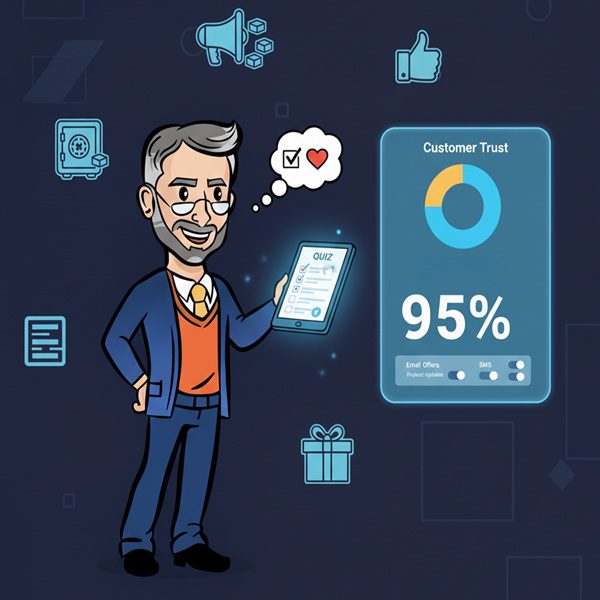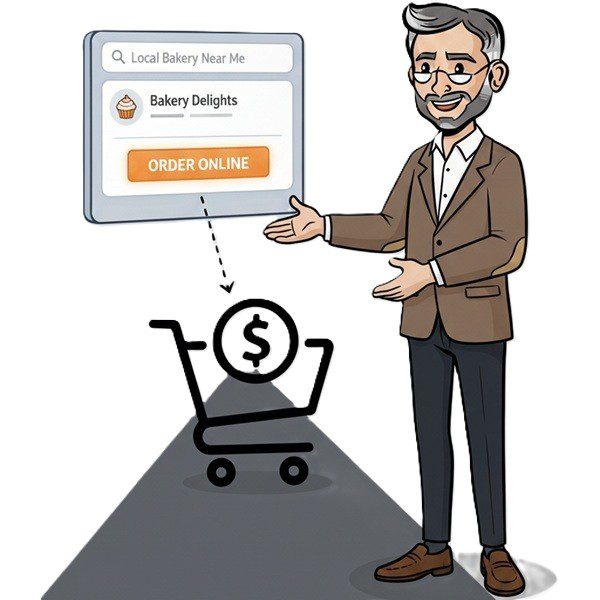
Definition: A zero-party data strategy is a marketing approach focused on collecting information that customers willingly and proactively share with your brand. This includes data gathered through surveys, quizzes, preference centers, and interactive tools. Unlike third-party data, zero-party data is volunteered directly by the user, making it more accurate, compliant, and actionable for personalization.
Example in a Sentence: The marketing team built a zero-party data strategy using interactive quizzes and preference forms to improve personalization and boost customer trust.
Why Is a Zero-Party Data Strategy Important?
1. Builds Stronger Customer Trust
Zero-party data comes from direct customer input—no hidden tracking or assumptions. This transparency strengthens trust and helps you stay compliant with privacy regulations.
2. Enables Hyper-Personalization
By understanding customer preferences and intentions straight from the source, marketers can craft campaigns that feel relevant, timely, and personal—boosting engagement and loyalty.
3. Improves Lead Segmentation
With structured zero-party data, you can categorize leads by behavior, intent, or interest—making your messaging sharper and conversions smoother.
4. Delivers Better ROI
When customers share accurate, intentional data, campaigns become more efficient. You reduce wasted spend, increase relevance, and drive higher engagement rates.
5. Future-Proofs Your Marketing
As third-party cookies fade out and privacy laws evolve, zero-party data provides a reliable, ethical, and future-ready foundation for audience insights.
Build Trust and Personalization Through Data People Choose to Share
A strong zero-party data strategy helps you create authentic connections, deliver meaningful experiences, and stay ahead of privacy changes. When paired with CRM best practices and first-party data, it becomes the backbone of a modern, customer-first marketing engine.
Key Elements of an Effective Zero-Party Data Strategy
- Clear Value Exchange: People are more likely to share their preferences if they understand the benefit—like a discount, personalized recommendation, or early access to content.
- CRM Integration: Feed zero-party data directly into your CRM to inform email segmentation, content planning, and sales outreach.
- Transparency & Consent: Be upfront about why you’re collecting data and how it’ll be used. Trust starts with clarity.
- Ongoing Optimization: Like any data strategy, zero-party data efforts should be tested, tracked, and refined. Monitor engagement and continuously improve the questions you ask and how you use the answers.
More Definitions
- Qualified Lead: A prospect who meets certain criteria and demonstrates intent or potential to become a customer.
- Link Juice: The SEO value or authority passed through hyperlinks to boost search rankings.
- One and Done: A sales or marketing approach that lacks follow-up or nurturing—often ineffective.
- Content Personalization: Using customer data and preferences to tailor messages, offers, and experiences that resonate with individual users.
- Conversion Rate Optimization (CRO) Definition: The process of improving website or campaign performance by increasing the percentage of visitors who take a desired action.
Useful Posts
- Top of Funnel: Organic Social Strategies: Learn how to build brand awareness using unpaid social media content and outreach.
- SEO Top of Funnel Strategies: Dive into organic tactics that increase visibility at the awareness stage without a paid budget.
- How to Find Low-Hanging Fruit in Sales & Marketing: Discover practical ways to identify quick wins and easy-to-implement strategies that don’t require a big spend.











